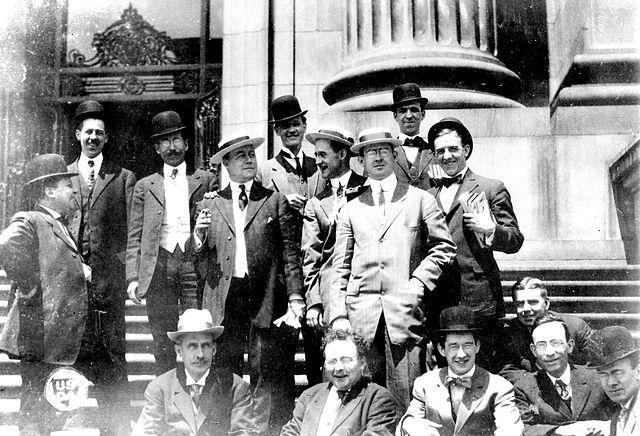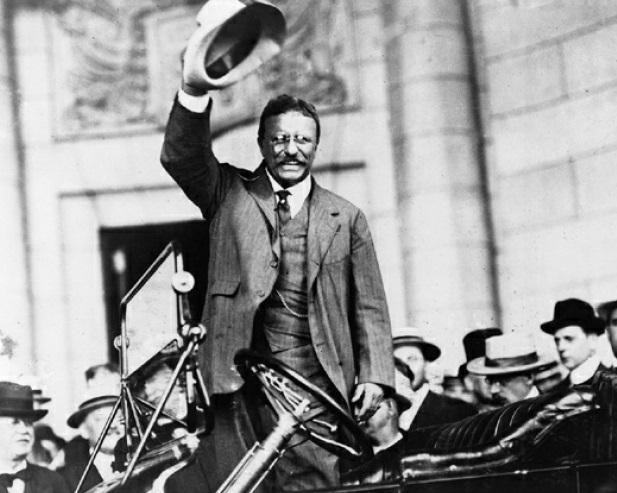President Theodore Roosevelt is widely regarded as one of the most progressive and influential Presidents in American history. During his time in office, he was known for his commitment to promoting public health and safety, and his efforts to regulate industries that threatened the well-being of American consumers. One of the most important pieces of legislation that he supported during his time in office was the Pure Food and Drug Act, which was enacted in 1906.
The presidency of Theodore Roosevelt started on September 14, 1901, when he became the 26th president of the United States after the assassination of President William McKinley. A Progressive reformer, Roosevelt was a “trust buster” who earned a reputation for his regulatory reforms and antitrust prosecutions. He is known for the passage of the Pure Food and Drug Act and the Hepburn Act, which increased the regulatory power of the Interstate Commerce Commission. Roosevelt’s foreign policy focused on upholding the Monroe Doctrine, establishing the United States as a strong naval power, and promoting world stability through the maintenance of a balance of power.
In domestic affairs, Roosevelt sought to advance the public interest and promote a “Square Deal” for both average citizens and businessmen. He promoted the conservation movement, negotiated a settlement to the Coal Strike of 1902, and moved to the left, denouncing the rich and supporting labor unions. In foreign affairs, Roosevelt won the 1906 Nobel Peace Prize for mediating the Russo-Japanese War. He sought closer relations with Great Britain and minimized European power in Latin America through the Roosevelt Corollary. He is often ranked by historians as one of the greatest U.S. presidents of all time.
The Pure Food and Drug Act of 1906 was a significant piece of legislation during Roosevelt’s presidency. The act was enacted to ban foreign and interstate traffic in adulterated or mislabeled food and drug products, and it directed the U.S. Bureau of Chemistry to inspect products and refer offenders to prosecutors. The act required that active ingredients be placed on the label of a drug’s packaging and that drugs could not fall below purity levels established by the United States Pharmacopeia or the National Formulary. The passage of the Pure Food and Drug Act marked the beginning of the Food and Drug Administration’s mission to regulate food safety.
The Pure Food and Drug Act was designed to regulate the manufacture, sale, and transportation of food and drugs in the United States. The act was largely a response to growing public concern about the safety of food and drugs, and it was aimed at protecting consumers from adulterated or misbranded products. Prior to the passage of the act, there were few federal regulations in place to ensure the safety of food and drugs, and many products on the market were contaminated or otherwise unsafe for consumption. The Pure Food and Drug Act of 1906, also known as Dr. Wiley’s Law, was a key piece of Progressive Era legislation in the United States. Its main purpose was to ban the sale of adulterated or mislabeled food and drug products in foreign and interstate commerce. The act required that active ingredients be listed on drug labels and that drugs could not fall below established purity levels. The enforcement of the act was assigned to the Bureau of Chemistry in the U.S. Department of Agriculture, which was renamed the U.S. Food and Drug Administration (FDA) in 1930.
The push for federal regulation of food and drugs began in the late 19th century, as a growing number of Americans became concerned about the safety of the products they were consuming. This concern was fueled by a series of high-profile scandals, including the discovery of opium in patent medicines, and the widespread use of harmful additives in food and drink. In response to these concerns, a movement for food and drug regulation emerged, and the Pure Food and Drug Act was the result of many years of advocacy by reformers and public health advocates. With the growth of urban populations, food producers began to use dangerous preservatives, and quack medicine was widespread. Muckraking journalists, such as Upton Sinclair, exposed the unsanitary conditions and dangerous practices in the meatpacking and patent medicine industries. The public’s attention on these important issues led to the passage of the Pure Food and Drug Act as well as the 1906 Federal Meat Inspection Act.

The Pure Food and Drug Act was primarily a “truth in labeling” law, designed to raise standards in the food and drug industries and protect consumers from harmful products. The law required that drug labels list any addictive or dangerous ingredients and established a federal cadre of food and drug inspectors. Penalties for violating the law were modest, but goods found in violation were subject to seizure and destruction, which had a deterrent effect on would-be violators.
The passage of the Pure Food and Drug Act was not without controversy. Many industries, including the food and drug industries, opposed the act, arguing that it would lead to government overreach and that it was not necessary to protect the public. However, these arguments were not enough to prevent the act from being passed, and the Pure Food and Drug Act was signed into law by President Roosevelt on June 30, 1906.
Under the Pure Food and Drug Act, the federal government was given the authority to regulate the manufacture, sale, and transportation of food and drugs, and to enforce penalties for those who violated the act. The act also established the Bureau of Chemistry, which was later renamed the Food and Drug Administration (FDA), to enforce the provisions of the act. The FDA was charged with ensuring that food and drugs were safe and properly labeled, and with investigating complaints from consumers.
The Pure Food and Drug Act had a profound impact on the food and drug industries, and it helped to ensure the safety of American consumers. The act helped to reduce the number of contaminated or misbranded products on the market, and it gave consumers the peace of mind that the products they were purchasing were safe and properly labeled. The act also helped to set a precedent for future federal regulation of food and drugs, and it laid the foundation for the modern food and drug regulatory system in the United States.
In addition to its impact on the food and drug industries, the Pure Food and Drug Act also had a significant impact on public health. The act helped to reduce the number of food-borne illnesses and other health problems that were caused by contaminated or misbranded products, and it helped to increase public awareness of the importance of food and drug safety. The act also helped to spur advances in the fields of food and drug science, as researchers worked to develop new methods for ensuring the safety of these products.
Despite its many achievements, the Pure Food and Drug Act was not perfect, and it has been amended several times over the years to reflect changing needs and technological advances. For example, the act was amended in 1938 to give the FDA greater authority to regulate drugs, and it was amended again in 1962 to require drug manufacturers to prove the safety and efficacy of their products before they could be marketed.
In conclusion, President Theodore Roosevelt’s support for the Pure Food and Drug Act was a critical moment in the history of American public health and safety. The act marked a turning point in the regulation of food and drugs, and it helped to protect American consumers from harmful or contaminated products. Roosevelt’s commitment to promoting public health and safety, and his willingness to stand up to powerful industries, set a powerful example for future Presidents and public officials. Today, the Pure Food and Drug Act is considered one of the most important pieces of consumer protection legislation in American history, and its legacy continues to inspire efforts to ensure the safety and well-being of American consumers.
References:


